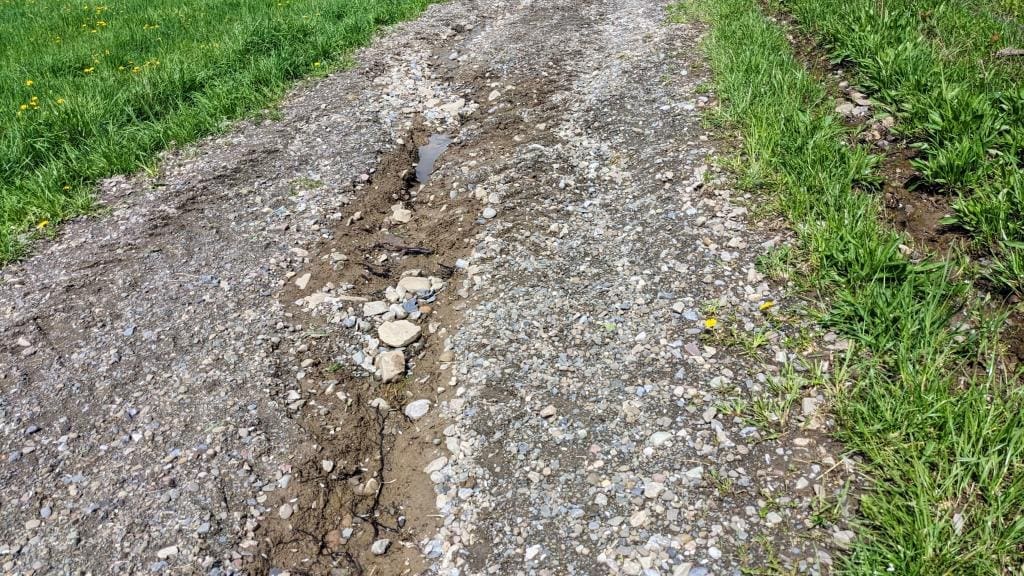Ever since we’ve moved here, I’ve been bothered by a place where water has eroded out a gully through the middle of the pasture I call “center field.” It’s impossible to know exactly when the problem started. It doesn’t show up in the topographical maps from the late 1800s and early 1900s, but I can see it starting in all the topo maps from 1944 onward.
Last fall we shaped new swales and diversion ditches to ease the flow of water away from the pasture. The solution seemed to be working. It successfully prevented the original gully from eroding during the big spring runoff season when all the snow melted. In most years, that seasonal runoff is the most damaging, so I thought I had the problem well in hand.
But in late April and early May we experienced a week and half of steady rain. As the soil saturated, flows increased and eventually overwhelmed my diversion swales. When we excavated last fall, we used a laser level to get the correct drainage grades, but I hadn’t accounted for the way fallen tree branches could dam up the flow. The water jumped out and gouged a new channel down the middle of the farm lane, carrying away about two dump truck loads of crushed stone in one night.

I’ve tinkered with the drainage over the recent days to add a little more slope to the new channel, and I think I’ve corrected the problem. Even if new branches wash downstream, enough flow should be able to pass to keep the runoff where I want it. Of course, I won’t know until we experience another exceptionally rainy period.
I suppose if I had to choose a place for erosion to happen, I’d rather it be a laneway and not a pasture. Pastures are the essential foundation of our farm, and the laneways are simply conveniences for moving from pasture to pasture. Two new loads of stone will cost about $700, which is more than I’d rather pay, but it certainly doesn’t rank on my top ten list of the worst ways I’ve lost money.
Making mistakes like this helps bring perspective to some of the rhetoric about sustainability and regeneration. I might have all the best intentions, purposing to do the right thing for my land. But no matter how careful I am, I’m going to make some mistakes. I’m going to spread new chaos even as I attempt to repair problems. It is good for me to stand in the middle of a mess of my own making to acknowledge that I am capable of damaging this place. “Trailing clouds of entropy do we come,” if Wordsworth will excuse me.
The potential for doing harm might be an argument in favor of smaller farms. My mistake wrecked a few hundred feet of laneway in an attempt to fix some previous farmer’s mistake of gouging out a gully measuring a few hundred feet through one pasture. But what if instead of working on 100 acres, I were working on 1,000, or 10,000, or 100,000? I would need to leverage my work by using increasingly large machines, taking on larger projects, and when the inevitable mistakes came, they would increase proportionally. Even if the rate of errors per acre remained identical between small and large farms, the scaled-up operations would make their mistakes at scale. So instead of damaging a few hundred feet, their damage would stretch for miles, radically altering landscapes and watersheds. Smaller farmers will still do dumb things, but they’ll do it with with less intensity, and the errors will be more distributed across time and location, giving natural systems a better chance to rebalance themselves.

4 thoughts on “Erosion and Good Intentions”
Another excellent article. Yes , small farms, perhaps sharing some necessary farm machines to save money, make more sense than the mega ranches. Of course local abattoirs would be needed. The power of water is impressive.
Yes, fixing the system involves lots of fixes throughout the system, so meat processing and distribution all need to be addressed.
I got some good ideas for my life from this post.
Thanks Tom.